THE ART OF REPLICATION
Press Text
THE ART OF REPLICATION
08.05.–31.07.2022
Draiflessen Collection
Georgstraße 18 | 49497 Mettingen
info@draiflessen.com | www.draiflessen.com
When considering the value and significance of a work of art, scholarly studies, temporal context, and public recognition play an essential role, as of course does the question of the work’s authorship. What happens, however, when works of art are replicated? By what standards do we then evaluate them?
THE ART OF REPLICATION presents precisely such works of art: plaster casts of the Venus de Milo and of the fragments of pedimental sculpture discovered in 1811 on the Greek island of Aegina, known as the Aeginetans, reconstructions in plaster of the Belvedere Torso, cork models of ancient buildings, and painted copies and print reproductions of Raphael’s Sistine Madonna. With these six focal points, the exhibition deliberately poses the question of how we should evaluate not only a copy itself, but also the prototype on which it is based, and challenges us to reconsider criteria such as originality, provenance, and authorship.
Appreciation of a Painted Copy
By the 19th century Raphael’s painting known as the Sistine Madonna from 1512-13 already ranked among the paintings most frequently copied in paint and reproduced in other media. Originally commissioned for the high altar of the church of San Sisto in Piacenza, Italy, Raphael’s painting was sold to the court of Dresden in the 18th century, while a copy remained in its former location. Until the end of the 19th century, a perfectly copied painting was highly valued, and seen as a reflection of the copyist’s skill. At the latest with the rise of Modernism, with its defining standard of originality, copying and replication lost their legitimacy. Nevertheless, the proliferation of copies of a work enhanced its popularity, and in turn that of its creator. Can we not perhaps assess the significance of a work precisely in terms of multiple chains of replication?
The Plaster Cast as “Second Original”
Along with copies of paintings, the exhibition presents the impressive plaster casts of the Aphrodite of Milos, known as the Venus de Milo, the Aeginetan Sculptures, and the Belvedere Torso, whose marble prototypes rank among the most famous sculptures of antiquity. The replication of a motif or an entire figure in plaster boasts a long tradition extending far back into antiquity. Casts were used to complete private and public collections, and as objects of study and inspiration for artists in training. They also played an essential role in transmitting images from one place to another. The production of plaster casts particularly flourished in the 19th century. Thanks to their uniformly white and even surface, at times these “second originals” even enjoyed a higher status than their marble or bronze prototypes. Last but not least, as important supplements to museum collections, they also contributed to a more comprehensive overview of the history of art.
The exhibition consists largely of loans from the collection of the Lindenau-Museum Altenburg, founded by Bernhard August von Lindenau (1779-1854) in the early 19th century. This museum stands out for its presentation of a wide variety of artworks side by side, regardless of their status as originals, copies, casts, or models.
.png?locale=en)
Download and Credits
The Art of Replication, Belvedere Torso reconstructed as the pensive Ajax, © Draiflessen Collection/Staatliche Antikensammlungen and Glyptothek Munich, Design: Carmen Strzelecki, Cologne
Aphrodite of Milos, called Venus de Milo, 2nd half of the 19th c., plaster cast of the ancient marble sculpture 150-125 BCE, acquired 1896, © Skulpturensammlung, Staatliche Kunstsammlungen Dresden, Photo: Reinhard Seurig/Hans-Jürgen Genzel
Anton Hille, Sistine Madonna, 1913, oil on canvas, after Raphael 1512/13, © Gemäldegalerie Alte Meister, Staatliche Kunstsammlungen Dresden, Photo: Elke Estel/Hans-Peter Klut
Belvedere Torso as the pensive Ajax, 1990s, Plaster cast of a Roman copy, 30 BCE – 14 CE, after a Hellenistic sculpture, © Staatliche Antikensammlungen and Glyptothek, Munich, photo: Renate Kühling
.png?locale=en)
The art of replication

Aphrodite von Melos, sogenannte Venus von Milo, 2. Hälfte 19. Jh. Gipsabguss nach der antiken Marmorskulptur 150–125 vor Chr., erworben 1896
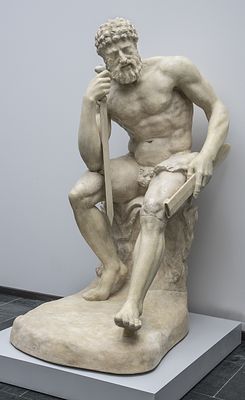
Torso vom Belvedere als sinnender Aias, 1990er-Jahre Gipsabguss nach römischer Kopie 30 vor Chr.–14 nach Chr., nach hellenistischem Vorbild
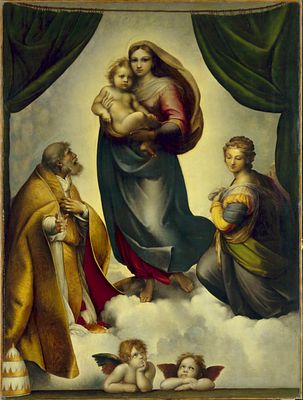
Die Sixtinische Madonna, 1913 Öl auf Leinwand, nach Raffael 1512/13
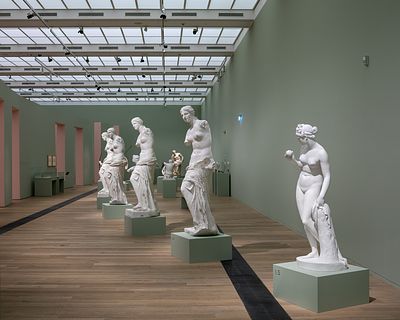
Die Kunst der Wiederholung, Ausstellungsansicht
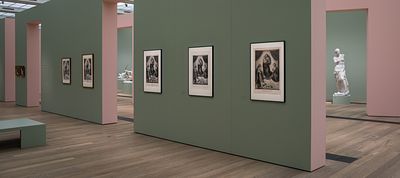
Die Kunst der Wiederholung, Ausstellungsansicht
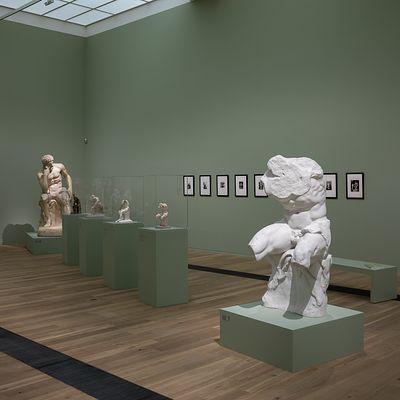
Die Kunst der Wiederholung, Ausstellungsansicht
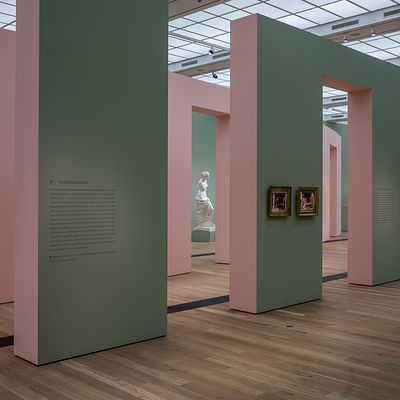
Die Kunst der Wiederholung, Ausstellungsansicht
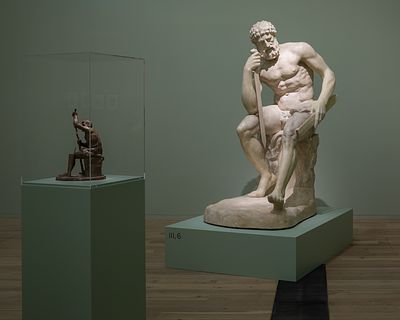
Die Kunst der Wiederholung, Ausstellungsansicht
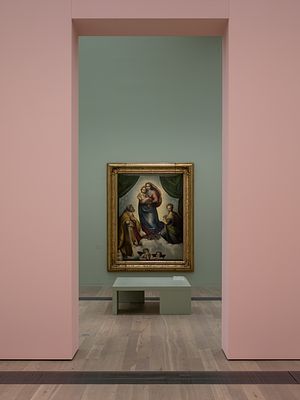
Die Kunst der Wiederholung, Ausstellungsansicht